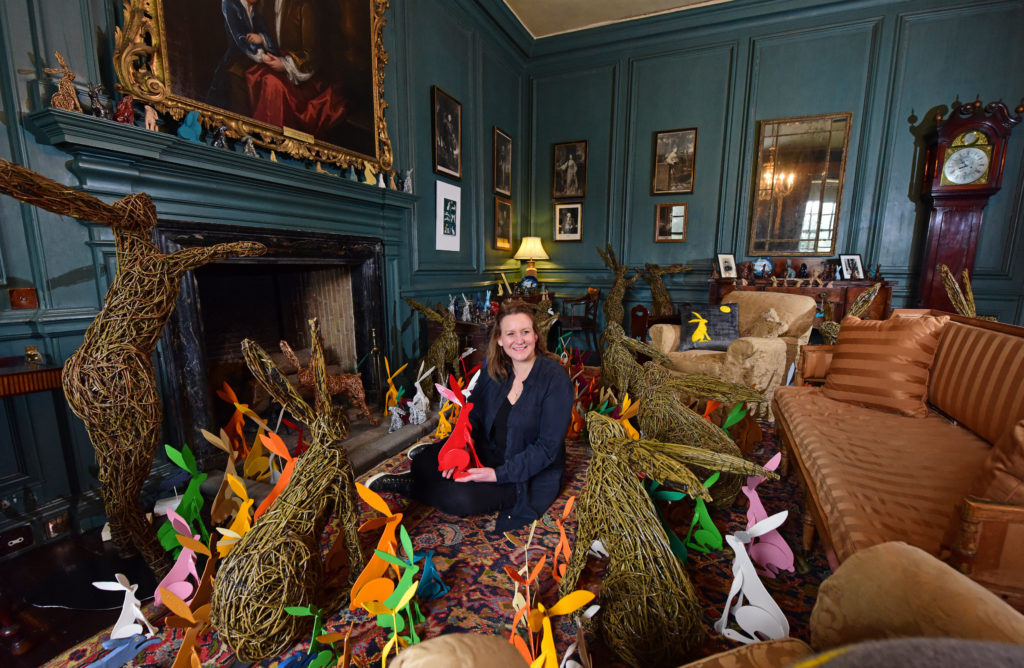
WHITBY sculptor Emma Stothard’s wildlife work has come on leaps and bounds over the past year for her latest show at Nunnington Hall, Nunnington, near Helmsley.
To mark 2020 being a leap year, she has created a one-off installation of 366 Leaping Hares, one for each day of the year, combining sculptures, illustrations and paintings, all for sale, on display amid the historic collection in the Smoking Room of the National Trust country house.
Alas, Nunnington Hall is now closed with effect from this Wednesday (May 18), in response to Government advice on the Coronavirus pandemic. “The safety of our staff, volunteers and visitors is our priority,” says senior visitor experience officer Laura Kennedy.
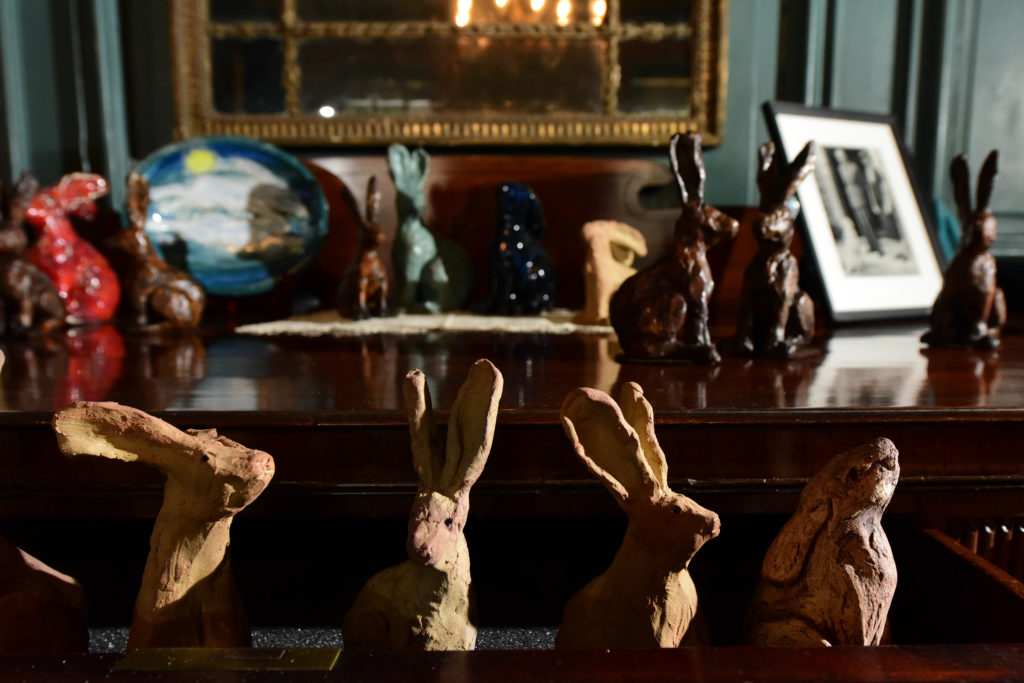
Let’s take a leap of faith, however, beyond the month of the Mad March Hare and leap ahead to later in the year when hopefully you can still see 366 Leaping Hares. “The idea came first, doing something for 2020, for Leap Year, rather than responding to a particular space, and I thought ‘let’s do 366 hares’,” says Emma. “Given that number, I knew some would need to be small, with some bigger ones for contrast.”
Emma spent the past year creating each work, whether clay, wire or willow sculptures, textiles hangs and cushions, drawings and ceramic tiles.
All have been individually hand-finished and dated by the sculptor, not least a special Leap Day Hare to mark Saturday, February 29. “Each of those 366 days is going to be special for someone – a birthday, an anniversary, maybe even a proposal of marriage on the Leap Day itself!” says Emma.
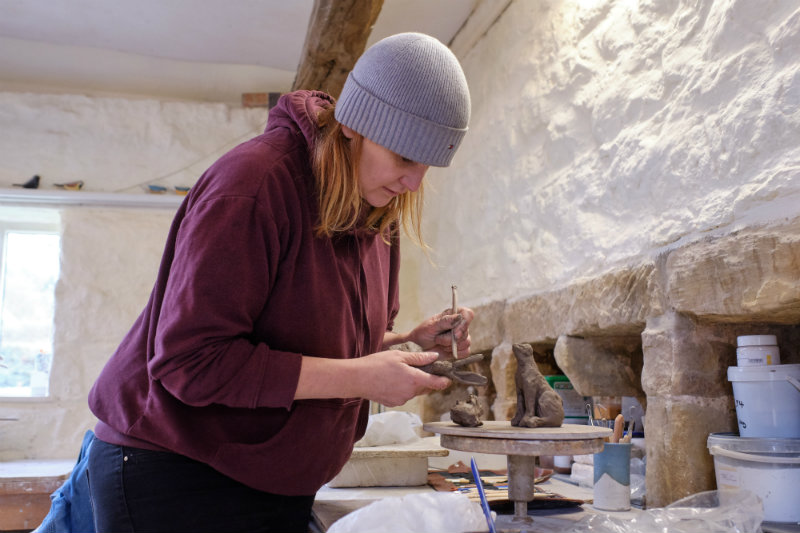
She has responded too to Nunnington Hall’s “rich sense of history”. “Generations have lived here, and you can feel their presence in the furniture, the wallpaper and the textiles,” she says.
Consequently, Emma’s installation explores the array of materials that embodies the ever-changing architecture and fabric of the historic building, while experimenting with contemporary methods too in her hotchpotch of hares that range from four-foot willow sculptures to four-inch miniature wire and clay collectables.
Placed by Emma amid the historic collection, some are in full view; others are in the Smoking Room’s hidden spaces, nooks and crannies, even emerging from drawers or to be spotted under furniture.
Hare, there, everywhere, yes, Emma loves hares. “They’re just so wonderful to see, aren’t they,” she enthuses. “I see them quite a lot when I’m walking across the fields with my dog.
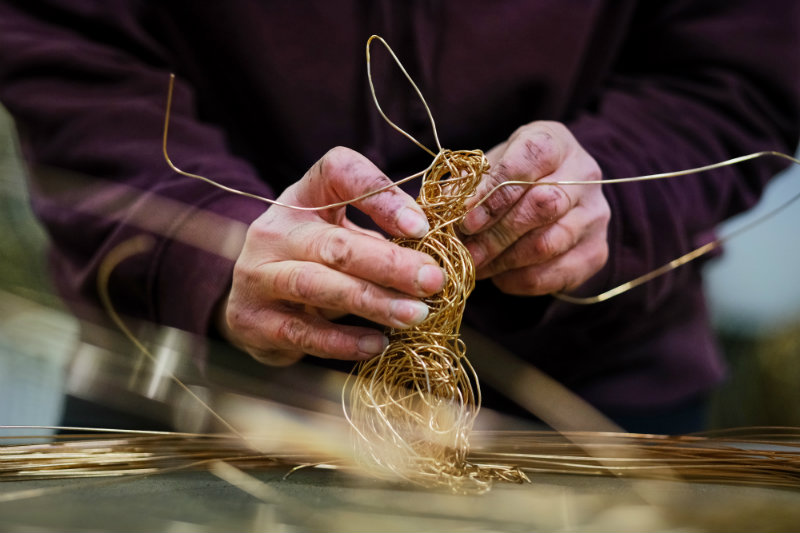
“I love spotting them because they’re so elusive, so quick moving. They’re magical to sculpt, and it’s the same with roe deer. I find them fascinating, beautiful, because you can never get that close to them.
“We’re steeped in their history and it feels a real privilege to be in their presence when they run out of front of me.”
The large number of hares required was the green light for Emma to broaden her working practices. “Like casting in bronze for the first time. I’d been recommended by (the late) Sally Arnup to use Aron McCartney, who has a metal-casting foundry at Barnard Castle, but there never came a time to be able to cast anything until now,” she says. “Now that I have, hopefully we can continue with the relationship.”

This is not the first time that Nunnington Hall has had an impact on Emma’s work. “I first exhibited here in 2012 on the Rievaulx Terrace, when I was also commissioned to make my first wire sculpture of a horse, which you can still see here,” she says. “They like to move it around the gardens to keep people on their toes.
“The wire horse was the first time I moved away from working in willow and has led me to doing more public commissions in wire and now bronze wire. There are 12 little galvanized ones in the new exhibition, coated in zinc in the galvanizing process.”
Her outdoor willow sculptures, meanwhile, must be treated at regular intervals. “Think of it as a seasonal chore in the garden,” she says. “Four times a year; 50 per cent linseed oil; 50 per cent Turps substitute, which is a traditional way to protect the strength of the willow.
“There’s no reason you can’t get ten years out of them if you look after them properly, as linseed oil builds a layer of varnish, like shellac. So, remember, four times a year, once a season.”
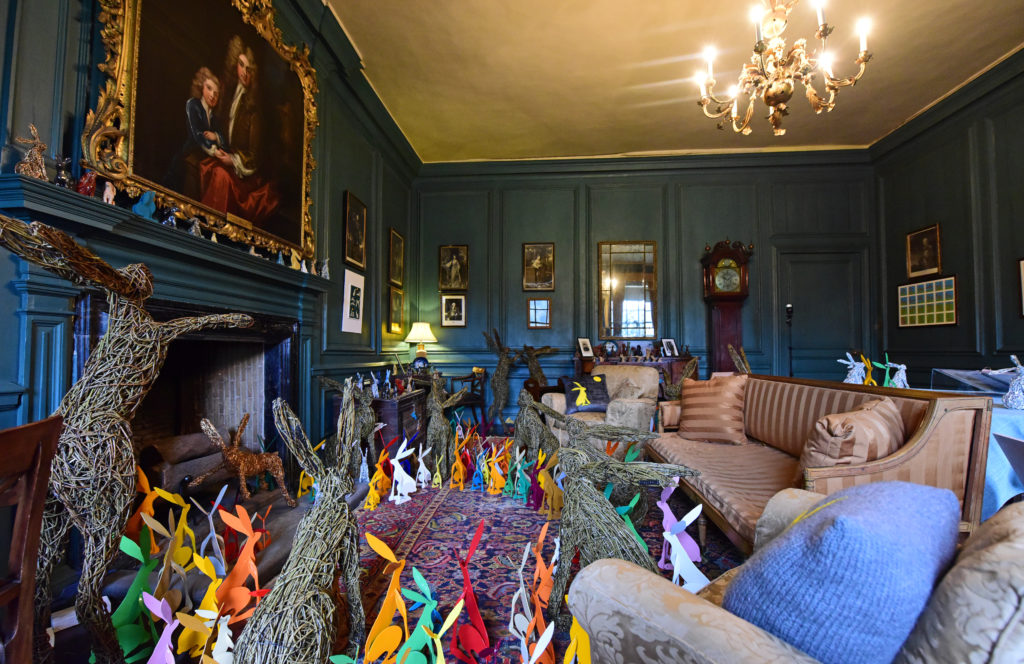
In Staithes, you can spot Emma’s coral and coronation blue lobsters, her 9ft marine crustaceans first exhibited in the Sculpture By The Sea exhibition at the 2015 Staithes Festival of Arts and Heritage, and now she has made Withernsea Crab, a three metre-high sculpture of a brown crab for the Withernsea Fish Trail.
Emma also had been working on sculptures for Jardin Blanc at May’s now cancelled 2020 Chelsea Flower Show, her fourth such commission for the hospitality area, where Raymond Blanc is the executive chef. More Emma work, by the way, can be found at Blanc’s Oxfordshire restaurant, the Belmond Le Manoir au Quat’Saisons.
At the time of this interview, Emma was on the cusp of signing a contract to create seven life-size sculptures celebrating Whitby’s fishing heritage on the east side of the East Coat harbour. ”I’m hoping to have the first piece installed in time for the Whitby Fish & Ships Festival in May,” she said. The 2020 festival has since been cancelled, but look out for Emma’s sculptures at the 2021 event on May 15 and 16 next spring.
Looking ahead, where would Emma most love to exhibit? “My dream is to do an exhibition at the Yorkshire Sculpture Park [at West Bretton, near Wakefield], particularly as I did my teacher-training there at Bretton Hall,” she says.
One final question for Emma: is it true that boxing hares are not male rivals scrapping over a female in hare-to-hare combat but in fact, contrary to myth, jack versus jill (as hares were known). “That’s right: it’s male against female, and in my boxing-hare couples, it’s always a female fending off a male,” she says.
As and when Nunnington Hall re-opens, Emma Stothard’s installation 366 Leaping Hares would then be on view and on sale until November 1.

Fab piece Charles, thankyou very much! Lets hope we can see the hares soon!
Emma.